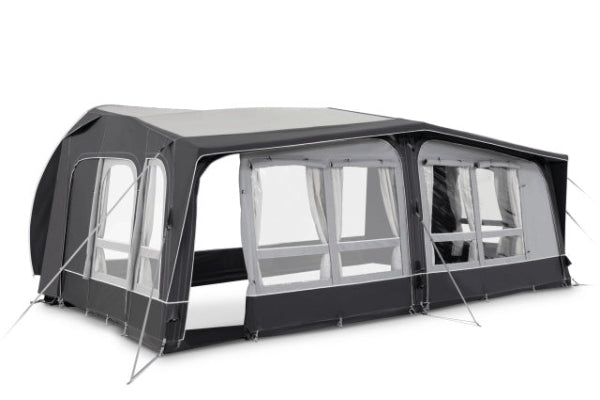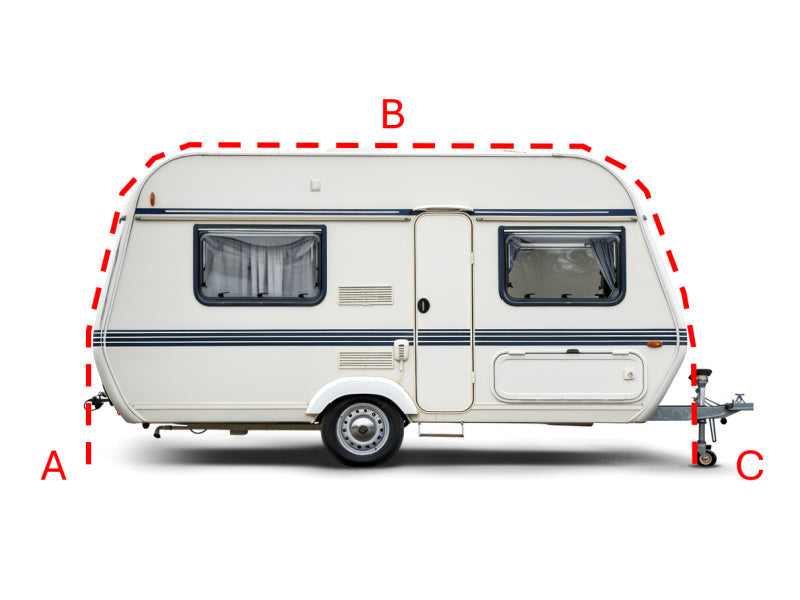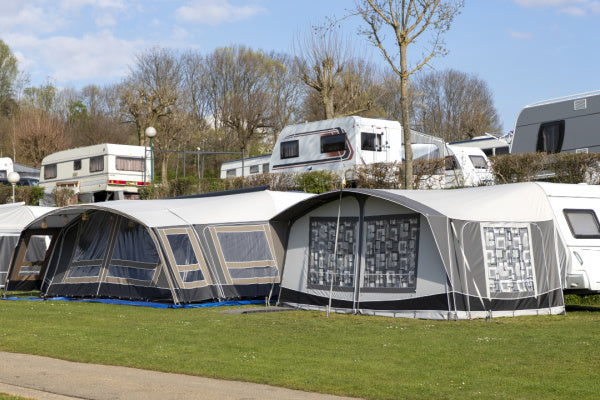Can Caravan Awnings Cause Damp Problems?
Ever noticed how caravan awnings are like umbrellas for your home-on-wheels? Well, yes, they can cause damp problems if not properly maintained. But don't pack away that awning just yet! From prevention tips to seasonal care secrets, we'll show you how to keep your caravan cosy and moisture-free.
Understanding Condensation
Picture this: a crisp autumn morning, steam rising from your morning tea, and droplets forming on the inside of your awning. That's condensation in action, and it's the sneaky culprit behind most damp problems in caravan awnings.

Condensation occurs when warm air collides with cold surfaces, creating moisture that becomes trapped between the awning fabric and caravan wall. Think of it like a greenhouse on a sunny day - warm inside, cool outside, and water droplets everywhere.
During typical British weather, this process happens constantly. Cooking breakfast, boiling the kettle, or simply breathing adds moisture to the air. When this moisture-laden air meets the cooler awning surface, it creates the perfect environment for damp to thrive.
Factors Contributing to Condensation
The battle against condensation becomes trickier when multiple factors come into play. Understanding these elements helps tackle the problem at its source.
Temperature differences create a condensation battleground. The greater the gap between indoor and outdoor temperatures, the more likely moisture will form on surfaces. This explains why damp problems often worsen during autumn camping trips.
Poor air circulation acts like a moisture trap. Without proper airflow, humid air stagnates, clinging to surfaces and creating damp patches. Think of a sealed bathroom after a hot shower - that's exactly what happens in a poorly ventilated awning.
Ground conditions play a crucial role too. Wet grass beneath an awning adds extra moisture to the equation. This moisture naturally rises, creating a humid microclimate within the awning space.
Preventing Dampness
Prevention beats cure when it comes to awning dampness. Taking proactive steps saves both time and money while protecting your caravan investment.
Proper installation forms the foundation of damp prevention. A correctly fitted awning allows water to run off efficiently, preventing pooling and seepage. Think of it as giving water a clear escape route rather than letting it linger.

Regular maintenance keeps the awning's waterproof coating effective. Over time, this coating weakens, allowing moisture to penetrate the fabric. Treating the awning annually helps maintain its water-resistant properties.
Ventilation Strategies
Ventilation serves as the primary weapon against dampness. Good airflow whisks away moisture before it can settle and cause problems.
Strategic vent placement creates effective cross-ventilation. Opening vents on opposite sides of the awning encourages air movement, similar to opening windows on both sides of a house to create a cooling breeze.
Morning ventilation routines make a significant difference. Opening vents and doors first thing removes overnight moisture build-up. This simple habit prevents damp from settling in and causing long-term issues.
Installing additional ventilation points provides extra protection. Mesh panels or vents can be added to existing awnings, improving airflow without compromising security or comfort.
Groundsheet and Ground Conditions
The ground beneath an awning demands careful attention. Poor ground management often leads to persistent damp problems.
Breathable groundsheets offer a practical solution. These specialised sheets allow moisture to escape while keeping grass and dirt at bay. They work like a Gore-Tex jacket - letting moisture out while keeping water from seeping up.

Proper site selection matters enormously. Setting up on slight slopes helps water drain away naturally. Avoiding low-lying areas prevents groundwater from becoming a constant battle.
Creating drainage channels around the awning perimeter helps manage water flow during heavy rain. These simple trenches direct water away from the living space, keeping the ground beneath the awning drier.
Drying the Awning Properly
Proper drying techniques extend awning life and prevent damp-related damage. This crucial step often gets overlooked in the rush to pack up camp.
Natural drying works best whenever possible. Sunshine and breeze provide the most effective drying combination, reaching all the nooks where moisture hides.
Thorough drying prevents mould growth. Even slightly damp awnings stored away become breeding grounds for mould spores, leading to unpleasant odours and potential health issues.
Using electric fans speeds up drying in humid conditions. Positioning fans strategically creates airflow that reaches usually stagnant corners and folds.
Regular cleaning removes dirt that can trap moisture. A clean awning dries faster and maintains its water-resistant properties more effectively.
Weather monitoring helps plan drying times. Checking forecasts allows for better pack-up planning, ensuring enough time for proper drying before storage.
By following these comprehensive strategies, caravan enthusiasts can enjoy their awning spaces without constant battles against damp. Remember that prevention through proper setup, maintenance, and daily habits creates the best defence against moisture problems. Keeping these principles in mind transforms awning care from a chore into a simple routine that protects your camping investment.
Other content you might like:
- How to extend a caravan awning
- Should caravan awning legs be up or down?
- Can you put a caravan awning up in the rain?
- Do mud flaps go in or out of awning?
- How to stop my caravan awning from sagging?
- How do I stop my awning from blowing away?
- Can caravan awnings cause problems?
- Can caravan awnings affect windows?
- Can caravan awnings affect the environment?
- Can caravan awnings be recycled?





Leave a comment